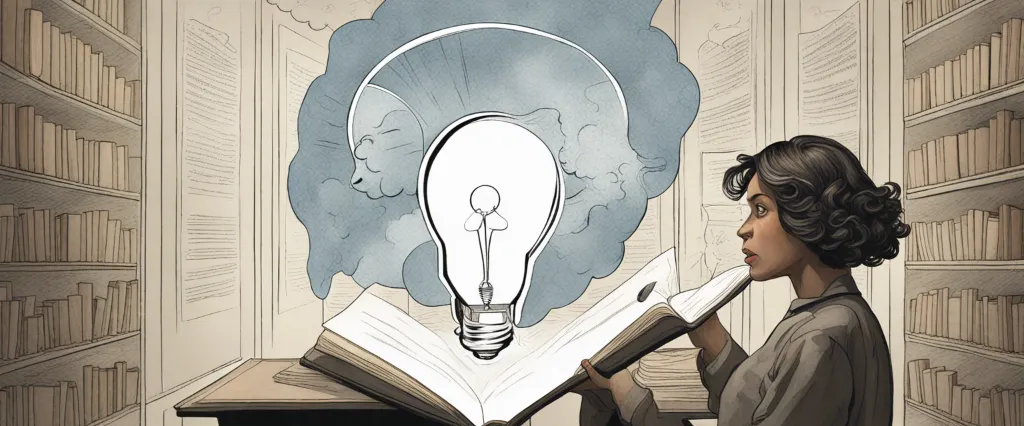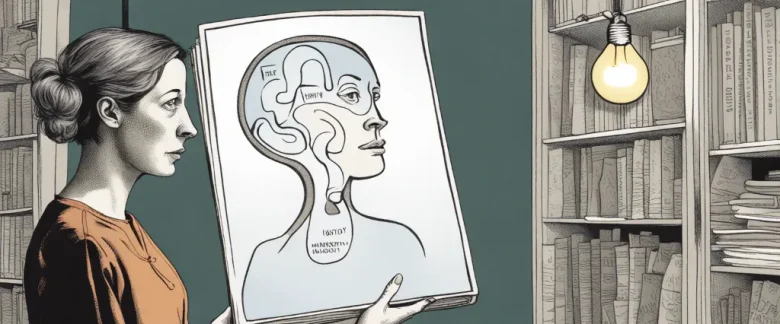
In “A Distant Mirror: The Calamitous 14th Century,” Barbara Wertheim Tuchman transports readers back in time to the 14th century, a period marred by war, plagues, social unrest, and religious turmoil. As one of the most respected and influential historians of her time, Tuchman delves into the lives of both the common people and the nobility, meticulously unraveling the complex tapestry of this distant era. With her vivid storytelling and meticulous research, Tuchman brings the past to life, shedding light on the struggles, triumphs, and contradictions of a world in upheaval.
Chapter 1: The World in Crisis: Europe in the 14th Century
Chapter 1 of “A Distant Mirror” by Barbara Wertheim Tuchman, titled “The World in Crisis: Europe in the 14th Century,” provides an in-depth analysis of Europe during a time of significant turmoil and upheaval. Tuchman examines the political, social, economic, and religious aspects that contributed to the profound crisis faced by the continent in the 14th century.
Tuchman starts by describing the demographic catastrophe brought upon Europe by the Great Famine (1315-1322), leading to widespread starvation and substantial population decline. This crisis was followed by the Black Death (1347-1352), a devastating pandemic that wiped out nearly a third of Europe’s population.
The author highlights the resulting social discontent and the rise of millenarianism and religious fanaticism among the masses. She explains how the combination of these catastrophes led to an increased sense of fear, guilt, and desperation as people searched for explanations and salvation in a world seemingly doomed.
Tuchman also examines the political landscape of Europe, characterized by weak and fragmented states engaged in continuous conflicts. She delves into the Hundred Years’ War between England and France, exploring its origins and consequences, as well as the impact of emerging military technologies.
Moreover, the author discusses the role of the Church in this crisis-ridden era, addressing the corruption and moral decadence that plagued the religious institutions. She emphasizes the emergence of radical and dissenting religious movements, such as the Flagellants and the Lollards, which challenged the authority of the Catholic Church.
In conclusion, Chapter 1 of “A Distant Mirror” provides a comprehensive overview of the multiple crises Europe faced during the 14th century. It explores the demographic disasters, political instability, and religious transformations that shaped the continent, setting the stage for the subsequent chapters, where Tuchman further delves into the intricate details of this tumultuous period.
Chapter 2: The Black Death: Catastrophe and its Aftermath
Chapter 2: The Black Death: Catastrophe and its Aftermath of the book A Distant Mirror by Barbara Wertheim Tuchman delves into the devastating impact of the Black Death on 14th-century Europe and the lasting consequences it had on society.
The chapter begins by describing the arrival of the Black Death, a bacterial plague, in Europe through the port of Messina in 1347. The highly contagious disease quickly spread throughout the continent, killing millions of people in its wake. Tuchman meticulously details the symptoms of the disease, including horrific boils, high fever, disorientation, and ultimately death, which killed individuals within days.
Discussing the social fabric of medieval Europe, Tuchman explains how the Black Death disproportionately affected the peasant class, as they lived in close quarters and had limited access to healthcare. They perished in overwhelming numbers, leading to a severe labor shortage that disrupted agricultural production and further deepened the economic crisis.
Tuchman analyzes the psychological effects of the Black Death on the survivors, noting a general sense of despair and irrational behavior. With the collapse of moral values and the belief that the end of the world was near, many turned to flagellation and other extreme acts of penance.
The chapter also explores the ramifications of the Black Death on social hierarchies. As the upper class succumbed to the disease, survivors from lower classes found themselves inheriting land, wealth, and positions of power. This disrupted the traditional feudal order and contributed to a sense of social upheaval.
Overall, Chapter 2 comprehensively presents the catastrophic nature of the Black Death and its profound impact on European society. It not only describes the immediate devastation caused by the disease but also touches upon the long-term consequences that shaped the subsequent historical developments in Europe.
Chapter 3: The Hundred Years’ War: Conflict and Struggle for Power
Chapter 3 of Barbara Wertheim Tuchman’s “A Distant Mirror” focuses on the Hundred Years’ War, a protracted conflict between England and France that spanned from 1337 to 1453. This war was ultimately a struggle for power between the two kingdoms and marked a turning point in European history.
Tuchman starts by examining the causes of the war, which can be traced back to the disputed succession to the French throne. Edward III of England, who had dynastic ties to the French royal family, claimed the throne and launched a campaign to assert his rights. This led to a series of battles and ongoing tension between England and France, with intermittent periods of truce and negotiation.
The war was characterized by a series of sieges, battles, and naval conflicts, with both sides experiencing victories and setbacks. Tuchman details several key events, such as the Battle of Crécy in 1346 and the Battle of Poitiers in 1356, where English longbowmen played a significant role in England’s military success.
Throughout the war, Tuchman emphasizes the devastating impact on the civilian population, particularly in France. The conflict disrupted agriculture, economy, and society, resulting in famine, plague, and social unrest. The author also highlights the emergence of chivalric values and the code of knightly honor, as well as the new military strategies and weaponry that influenced warfare during this period.
Tuchman underscores the larger geopolitical ramifications of the Hundred Years’ War, including the changing dynamics of Europe as new alliances formed and old feudal ties weakened. The war ultimately ended with France retaining its independence and the English influence significantly reduced.
Overall, Chapter 3 of “A Distant Mirror” provides a comprehensive overview of the Hundred Years’ War, exploring its causes, key battles, societal impact, and broader implications for European history.
Chapter 4: The Church in Turmoil: Papal Schism and Religious Dissent

Chapter 4 of “A Distant Mirror” explores the state of the Catholic Church during the 14th century, particularly focusing on the Papal Schism and religious dissent that plagued the Church. Barbara Wertheim Tuchman provides a comprehensive overview of the events that unfolded during this period.
Tuchman begins by describing the Papal Schism, which began in 1378 and lasted for almost 40 years. The schism divided the Church, with multiple claimants to the papacy and rival popes in Rome and Avignon. Tuchman highlights the political and power struggles that led to this division, as well as the confusion and disillusionment it caused among the faithful.
Furthermore, Tuchman delves into the religious dissent that emerged during this time. She discusses the rise of heretical movements, such as the Lollards in England and the Hussites in Bohemia, who challenged Church authority and called for reforms. These movements gained traction among the disillusioned population, as they criticized the corruption and excesses of the Church.
Tuchman also explores the efforts made to reconcile the papal division, including the various councils convened to resolve the schism. However, these attempts only further complicated matters and failed to provide a lasting solution.
Throughout the chapter, Tuchman emphasizes the impact of the schism and religious dissent on the Church and society as a whole. The instability within the Church led to a loss of faith and trust among the people, while the rise of dissenting movements threatened the established order. The Papal Schism and religious dissent formed a crucial backdrop to the social and political unrest that characterized the 14th century, contributing to the overall sense of turmoil and uncertainty in this period.
Chapter 5: Social Unrest and the Peasants’ Revolt
Chapter 5 of “A Distant Mirror” by Barbara Wertheim Tuchman explores the social unrest and the Peasants’ Revolt that took place during the 14th century in France. Tuchman analyzes the underlying causes and events that led to this significant uprising.
The chapter begins by discussing the dire social and economic conditions faced by peasants in the aftermath of the Black Death, which ravaged Europe between 1347 and 1351. The population loss from the plague disrupted the labor force, causing a scarcity of workers and consequently leading to demands for higher wages. However, the feudal system, which heavily favored the lordly class, enforced oppressive labor laws and prevented the peasants from gaining economic independence.
As a result, the peasants became increasingly discontented, and their anger was further fueled by ongoing taxes imposed on the lower classes to support the lavish lifestyle of the aristocracy. Tensions escalated when King Charles IV introduced yet another levy known as the gabelle, a tax on salt, which disproportionately affected the poor. This taxation, combined with other grievances, served as a catalyst for the revolt.
The chapter then explores the events of the Peasants’ Revolt, led by leaders such as Guillaume Cale who emerged from the countryside. The revolt took on a religious fervor as the lower classes, fueled by the teachings of radical preachers, believed that God was on their side. The peasants, equipped with improvised weapons, vented their rage on the nobility, destroying castles and killing lords, exemplifying their frustration and thirst for justice.
However, Tuchman points out that despite their temporary victories, the Peasants’ Revolt was ultimately suppressed by the ruling class. The revolt sent shockwaves throughout Europe, serving as a stark reminder of the underlying tensions and struggles within feudal society.
In conclusion, Chapter 5 of “A Distant Mirror” delves into the social and economic causes of the Peasants’ Revolt, highlighting the desperate conditions faced by the lower classes during the 14th century in France. The revolt itself demonstrated the peasants’ deep-rooted discontent and desire for justice.
Chapter 6: Chivalry and Knighthood: The Code of Honor
Chapter 6 of A Distant Mirror by Barbara Wertheim Tuchman explores the concept of chivalry and knighthood during the turbulent 14th century. Tuchman delves into the origins and evolution of the code of honor followed by knights, as well as the societal expectations placed upon them.
She first discusses the origins of knighthood, tracing it back to the barbarian invasions of the Roman Empire, where the idea of military service as a personal commitment to a lord developed. Over time, this evolved into a system of feudalism, where knights pledged loyalty and military service to their feudal lords in exchange for lands and protection.
Tuchman then examines how the code of chivalry emerged as a response to the brutal violence and lawlessness prevalent in medieval society. Knights were expected to uphold ideals such as valor, courtesy, and loyalty to their lord, while also protecting the weak and defenseless. Yet, she also highlights the dichotomy between these noble ideals and the harsh reality of war and the knightly lifestyle.
Furthermore, the chapter explores the education and training of knights, emphasizing the importance of their martial skills and understanding of courtly culture. Tuchman reveals the intricate rituals and ceremonies associated with knighthood, which served to cement their status as the aristocratic elite.
Finally, Tuchman examines various literary works that portrayed the idealized vision of chivalry, such as Arthurian legends and chansons de geste. These stories, while often conveying the virtues of knighthood, also frequently highlighted the challenges and conflicts knights faced in living up to these ideals.
In summary, Chapter 6 of A Distant Mirror provides a comprehensive overview of chivalry and knighthood, its origins, societal expectations, and the dichotomy between noble ideals and the harsh realities of medieval life and warfare.
Chapter 7: The Challenges of Governance: Kings, Princes, and Nobility
In Chapter 7 of “A Distant Mirror” by Barbara Wertheim Tuchman, titled “The Challenges of Governance: Kings, Princes, and Nobility,” the author explores the difficulties faced by medieval rulers in maintaining power and controlling their nobility during the 14th century.
The chapter begins by highlighting the tension between the monarchs and the nobility. Kings were constantly struggling to assert their authority over the independent and powerful nobles who often challenged their rule. Tuchman emphasizes that the balance of power between the two sides was delicate, with both needing the cooperation of the other to sustain their dominance.
The author then delves into the rampant corruption among the nobility. The nobles, driven by greed and desire for personal gain, exploited their positions of influence in order to enrich themselves. This led to social unrest and undermined the stability of the feudal system, as the nobles’ actions increasingly went unchecked.
Tuchman also emphasizes the influence of warfare on governance during this period. Frequent wars, fueled by territorial disputes and ambitions, drained the finances and manpower of rulers and subjected their subjects to numerous hardships. These conflicts further strained the relationship between nobles and the crown, as many nobles sought to maintain their own private armies and power bases.
Furthermore, the chapter discusses the role of courtly culture and chivalry in shaping the behavior of the nobility. Chivalry, with its emphasis on honor, bravery, and codes of conduct, both bolstered and sometimes challenged the authority of kings. Tuchman argues that while chivalry encouraged noble loyalty to their liege lords, it also engendered a sense of personal honor that could lead to rebellion against perceived injustices.
In conclusion, Chapter 7 explores the complex dynamics between kings, princes, and nobility during the 14th century. Tuchman highlights the challenges faced by rulers in asserting their authority, the pervasive corruption among the nobility, the impact of incessant warfare on governance, and the paradoxical influence of chivalry on noble behavior.

Chapter 8: The Late Middle Ages: Transition and Reflection
Chapter 8 of “A Distant Mirror: The Calamitous 14th Century” by Barbara Wertheim Tuchman focuses on the Late Middle Ages, specifically the period of transition and reflection that occurred during this time. Tuchman delves into various aspects of society, politics, and culture that shaped Europe during the late 1300s.
One of the main themes explored in this chapter is the role of religion and spirituality during the Late Middle Ages. Tuchman discusses the various religious movements that emerged during this time, including mysticism and heresy. She also explores the impact of the Black Death on religious beliefs, as the catastrophic plague led many people to question the role of God in their lives.
Additionally, Tuchman examines the political landscape of the Late Middle Ages, focusing on the tumultuous reigns of several kings. She discusses the reign of Edward III in England and his ambitious attempts to expand his kingdom, as well as the Valois dynasty in France and their turbulent struggle for power.
Furthermore, Tuchman explores the changing nature of warfare during this period. She discusses the rise of gunpowder and the challenges it posed to knights and their traditional methods of warfare. Tuchman also delves into the impact of the Hundred Years’ War on both England and France, highlighting the devastation and societal upheaval caused by this conflict.
Ultimately, Chapter 8 of “A Distant Mirror” provides a comprehensive overview of the Late Middle Ages, emphasizing the profound changes and reflections that occurred during this period. Through a detailed analysis of religion, politics, and warfare, Tuchman illuminates the complex dynamics that shaped Europe in the late 14th century.
After Reading
In conclusion, A Distant Mirror by Barbara Wertheim Tuchman provides a comprehensive and fascinating look into the tumultuous 14th century, through the life and experiences of Enguerrand de Coucy. Tuchman skillfully weaves together historical events, social and cultural aspects, and personal narratives to offer readers a vivid and immersive glimpse into medieval Europe. The book adeptly captures the complexities of the time period, including the devastating effects of the Black Death, the power struggles between the French and English kingdoms, and the challenges faced by the common people. Through Enguerrand’s story, Tuchman offers valuable insights into the recurring patterns of history and the cyclical nature of human behavior. Overall, A Distant Mirror is a gripping and enlightening read that provides a deeper understanding of the past and its relevance to the present.
1. Lost to the West by Lars Brownworth: This captivating historical account offers a fascinating glimpse into the Byzantine Empire—a lesser-known era that significantly shaped Western civilization. Lars Brownworth skillfully brings to life the stories of forgotten emperors, political intrigues, and epic battles, providing an engaging and informative narrative that will captivate both history enthusiasts and general readers.
2. Games without Rules by Tamim Ansary: Building upon the foundation laid by A Distant Mirror, Games without Rules explores the complex history of Afghanistan. Tamim Ansary expertly navigates the political and cultural landscape of this turbulent nation, shedding light on its long-standing conflicts, external interventions, and the enduring struggle for stability. Ansary’s insightful analysis is crucial for anyone seeking to understand the current state of affairs in Afghanistan.
3. The Hollow Crown by Daniel Gwynne Jones: Following your exploration of feudal Europe in A Distant Mirror, The Hollow Crown provides a deep dive into the origins and intricacies of the medieval English monarchy. Daniel Gwynne Jones presents a comprehensive narrative that delves into the lives of the Plantagenets, their struggles for power, and the transformative impact they had on England’s political, social, and cultural landscape. This well-written account will surely captivate history buffs and fans of British royal history alike.
4. The Guns of August by Barbara Wertheim Tuchman: Another masterpiece by Barbara Wertheim Tuchman, The Guns of August is a gripping account of the events leading up to World War I. Tuchman meticulously explores the complex web of alliances, diplomatic missteps, and military strategy that contributed to one of the bloodiest conflicts in history. Her compelling writing style and meticulous research make this book a must-read for anyone interested in the origins and early stages of the Great War.
5. The Hundred-Year Marathon by Michael Pillsbury: If you’re looking to expand your understanding of international relations beyond Europe, this thought-provoking book offers invaluable insights into China’s ambitions on the global stage. Michael Pillsbury delves into the history and strategies employed by China over the past century, shedding light on their long-term goals and potential implications for the Western world. This eye-opening read is both informative and timely, providing a fresh perspective on China’s rise to power.



